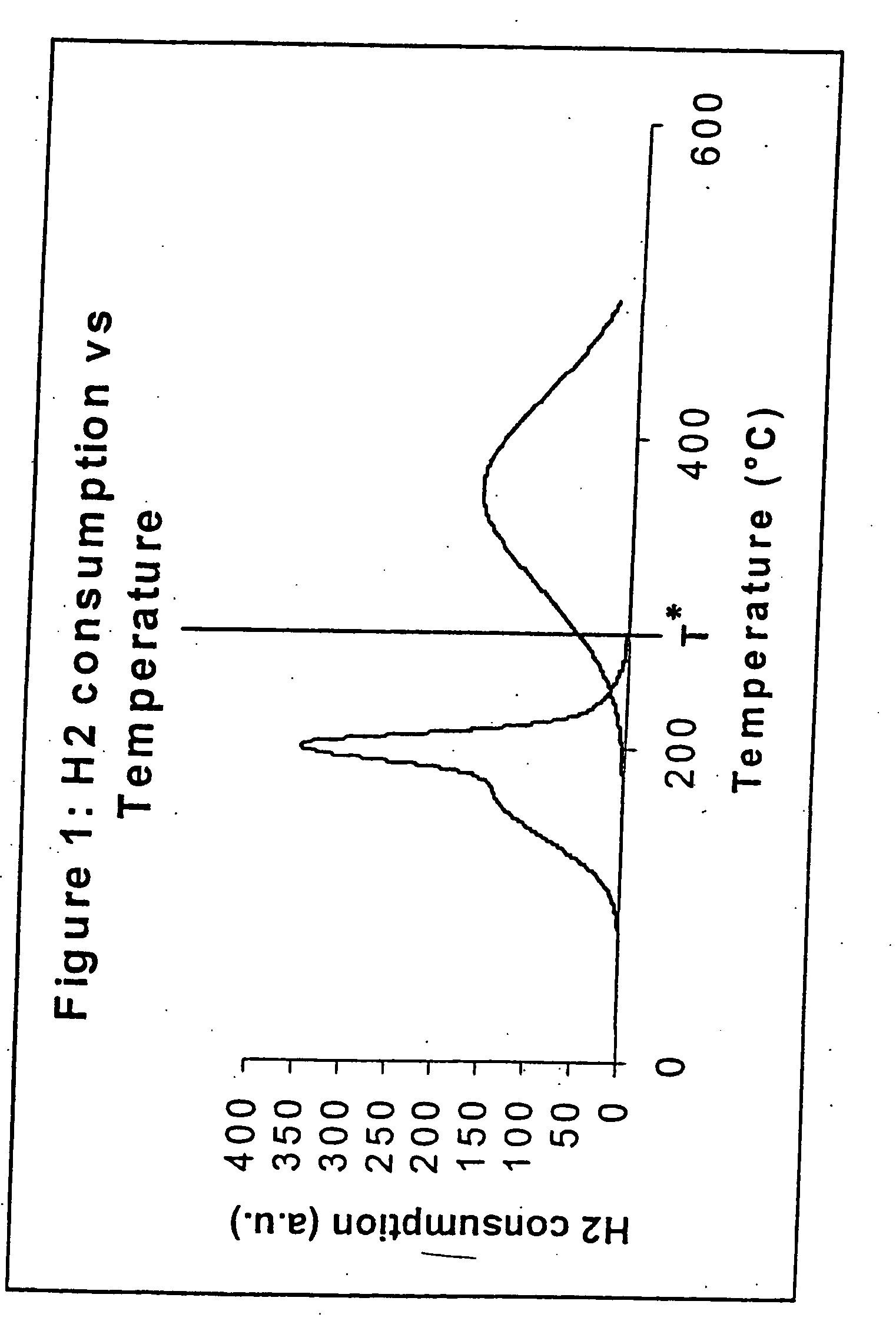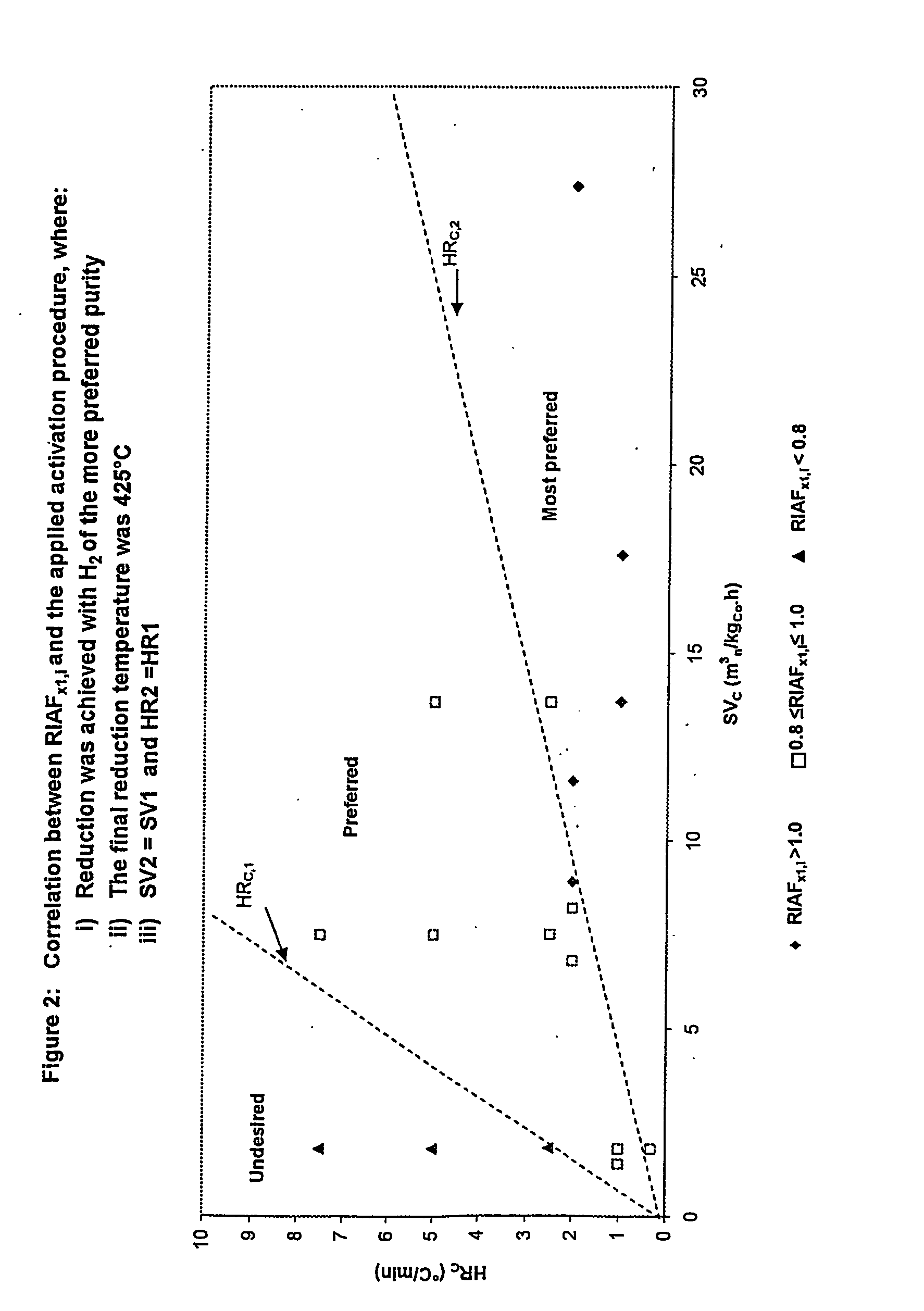Process for activating cobalt catalysts
a cobalt catalyst and activation process technology, applied in physical/chemical process catalysts, metal/metal-oxide/metal-hydroxide catalysts, other chemical processes, etc., can solve the problems of loss of control, the cycle time of batch-continuous commercial scale activation of cobalt supported catalyst precursors cannot be easily shortened,
- Summary
- Abstract
- Description
- Claims
- Application Information
AI Technical Summary
Benefits of technology
Problems solved by technology
Method used
Image
Examples
example 2
[0069] A temperature programmed reduction (‘TPR’) experiment was performed with the cobalt catalyst precursor of Example 1, ie with catalyst precursor X1. The TPR experiment was performed at atmospheric pressure, using a heating rate (‘HR’) of 2° C. / min, and a pure hydrogen feed rate of approximately 10.7 m3n / kgCohr, in a fixed bed reactor. The results are presented in FIG. 1. It can be seen from FIG. 1 that the activation takes place in two activation stages with the end of activation stage 1 defined by T*=250° C.
example 3
[0070] Cobalt catalyst precursors, as prepared in Example 1, were reduced according to different activation procedures, as given in Table 1 and Table 2, and subjected to the following Fischer-Tropsch synthesis test: [0071] Between 10 g and 30 g of the resultant reduced catalyst, ranging between 38 micron to 150 micron, was suspended in 300 ml molten wax and loaded in a CSTR with an internal volume of 500 ml. The feed gas consisted of hydrogen and carbon monoxide in a H2 / CO molar ratio from 1.5 / 1 to 2.3 / 1. This reactor was electrically heated and sufficiently high stirrer speeds were employed so as to eliminate any gas-liquid mass transfer limitations. The feed flow was controlled by means of Brooks mass flow controllers, and space velocities ranging from 2 to 4 m3n / kgcat / hr were used. GC analyses of the permanent gases as well as the volatile overhead hydrocarbons were used in order to characterize the product spectra.
[0072] The respective RIAFX1,i were estimated from these slurry ...
example 4
[0073] Cobalt catalyst precursors, as prepared in Example 1, were reduced in hydrogen feedgas of distinct dewpoint, as given in Table 3, and subjected to the Fischer-Tropsch synthesis test described in Example 3. The respective RIAFX1,i were estimated from these slurry phase CSTR Fischer-Tropsch synthesis runs, as given in Table 5.
PUM
| Property | Measurement | Unit |
|---|---|---|
| temperature | aaaaa | aaaaa |
| temperature | aaaaa | aaaaa |
| internal diameter | aaaaa | aaaaa |
Abstract
Description
Claims
Application Information
 Login to View More
Login to View More - R&D
- Intellectual Property
- Life Sciences
- Materials
- Tech Scout
- Unparalleled Data Quality
- Higher Quality Content
- 60% Fewer Hallucinations
Browse by: Latest US Patents, China's latest patents, Technical Efficacy Thesaurus, Application Domain, Technology Topic, Popular Technical Reports.
© 2025 PatSnap. All rights reserved.Legal|Privacy policy|Modern Slavery Act Transparency Statement|Sitemap|About US| Contact US: help@patsnap.com



